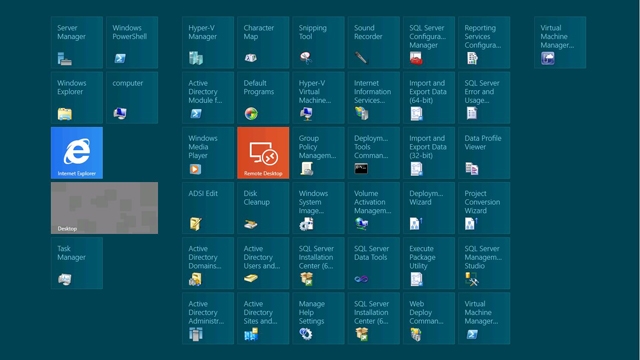Microsoft officially released Windows Server 2012 today. The new OS shares quite a few things with Windows 8 such as the kernel and the UI. Aside from the GUI, the main focus of Windows Server 2012, just like with its client counterpart Windows 8, is on the cloud. Microsoft, it seems, is jumping on the cloud computing bandwagon to capitalise on the trend. It should suffice to say that the latest version of Microsoft’s server OS takes a giant step forward when it comes to usability and features.
One of the main features of this operating system is the inclusion of PowerShell, which lets you control the server remotely through a command line. Server 2012 is the first version of Windows that lets you do that just like Unix-based servers do. It also enables you to pipe, or forward, the output of one process to the input of another process.
The user interface being introduced with Windows 8 might make unsure of how to go about doing tasks, but there’s no need for administrators to worry as the UI is optional and can be disabled to get a fully-functional server. You can even do away with the GUI completely and run the server through the PowerShell command line. This can be of great use to administrators as they can now perform routine tasks by simply writing a batch script in the command line and running it.
Windows Server 2012 also features a data-centre-friendly installation method called Server Core, which provides a way to install the OS over the network.
Windows Server 2012 is available in four different editions to suit individual user requirements and cater to the wide base of Microsoft's followers. The pricing depends on which edition of Windows Server 2012 you are going for.
We have two main versions: Standard and Datacenter. Unlike its predecessor, Windows 2008 R2 Enterprise, where the different editions all had different feature sets, support for different hardware, etc., Windows Server 2012’s two versions have the same set of features and the same hardware limits. Functionality is limited only by virtualisation rights. The Standard version lets you run it on up to two virtual machines, while the Datacenter edition lets you run an unlimited number of virtual machines. The Standard and Datacenter licenses will replace all Windows Server 2008 products currently available.
The Standard and Datacenter versions of Windows Server 2012 both support a larger number of storage, memory and processing power than Windows Server 2008 R2. Server 2012 has support for up to 320 CPU cores and up to 4TB of data storage space.
In addition to Standard and Datacenter, we have two limited-capability versions – Essentials and Foundation. Essential lets you run it on a machine with two sockets or in a virtual machine. Unlike the Standard or Datacenter versions, you can’t run Essentials on both hardware and virtual machines simultaneously. Foundation will be provided only via OEMs and will run only on single socket machines. Foundation doesn’t support virtualisation at all.

